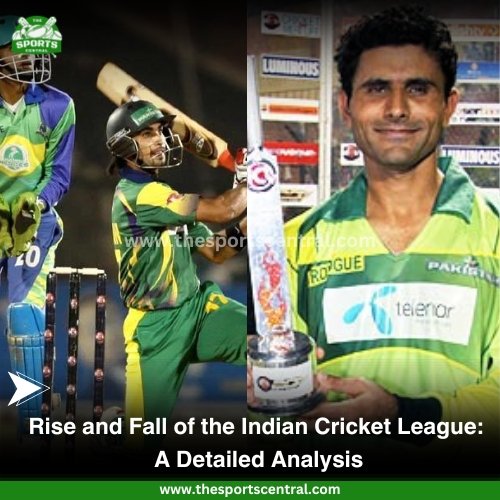Cricket, in India, is not just a sport; it’s a religion that unites millions across the nation. Over the years, cricket has seen various leagues and tournaments, each contributing to the sport’s evolution and popularity. Among these, the Indian Cricket League (ICL) holds a unique position, marked by its ambitious inception, controversial journey, and eventual demise. This article aims to provide a comprehensive overview of the Indian Cricket League, exploring its origins, impact, challenges, and ultimate legacy.
Origins of the Indian Cricket League
The Indian Cricket League was conceptualized in 2007 by the Zee Entertainment Enterprises, led by Subhash Chandra, as an independent cricket league aimed at rivaling the Board of Control for Cricket in India (BCCI)’s Indian Premier League (IPL). The ICL was envisioned as a platform to showcase domestic talent alongside international stars, promising lucrative contracts and exposure to players outside the national team setup.
Format and Structure
The ICL adopted a franchise-based model similar to the IPL, comprising teams representing various cities across India. Initially, the league featured six teams: Chennai Superstars, Delhi Giants, Hyderabad Heroes, Kolkata Tigers, Mumbai Champs, and Chandigarh Lions. Each team consisted of a mix of international and domestic players, with former cricketing legends serving as mentors and coaches.
Impact on Indian Cricket
The emergence of the Indian Cricket League marked a significant shift in the cricketing landscape of India. For the first time, domestic players had an alternative platform to showcase their talent and earn substantial financial rewards. The league’s emphasis on providing opportunities to underrated players helped uncover hidden gems who later made significant contributions to Indian cricket.
Moreover, the ICL’s innovative approach to the game, including the introduction of new formats like Twenty20 (T20) cricket, contributed to the sport’s growing popularity among Indian audiences. The league’s matches, featuring high-octane action and entertainment, captured the imagination of cricket fans across the country.
Challenges and Controversies
BCCI’s Opposition and Ostracization: The Board of Control for Cricket in India (BCCI) perceived the Indian Cricket League (ICL) as a direct threat to its monopoly over cricket in India. The BCCI, being the governing body for cricket in the country, wielded significant power and influence. From the outset, the BCCI made its stance clear: the ICL was not recognized or sanctioned by them. This led to a hostile relationship between the two entities. The BCCI actively discouraged players from participating in the ICL, warning them of potential repercussions.
As a result, players associated with the ICL faced severe consequences. Many were ostracized from official cricketing events organized by the BCCI, including domestic tournaments and international tours representing the national team. This created a dilemma for players, torn between their loyalty to the ICL and the desire to play for their country. The BCCI’s stance effectively forced players to make a choice, often at the expense of their careers and livelihoods.
Legal and Regulatory Challenges: The ICL encountered numerous legal and regulatory hurdles as it sought to establish itself as a legitimate cricketing entity. The BCCI, backed by its formidable legal team and political clout, initiated legal proceedings against the ICL on various grounds. These included allegations of unfair competition, breach of contract, and violation of intellectual property rights associated with the Indian Premier League (IPL).
Additionally, the International Cricket Council (ICC) and other national cricket boards expressed reservations about the ICL’s impact on the cricketing ecosystem. Concerns were raised about the league’s potential to destabilize the existing structure of international cricket and undermine the authority of established cricket boards. This led to pressure on players from participating countries to abstain from involvement with the ICL, further complicating its operations and growth prospects.
Financial Instability and Sponsorship Withdrawals: Despite its promising start, the ICL struggled to maintain financial stability amid the mounting challenges it faced. The league relied heavily on sponsorship deals and broadcasting rights to generate revenue. However, the controversies surrounding the ICL and its strained relationship with cricketing authorities impacted its ability to attract sponsors and secure lucrative broadcasting contracts.
As a result, the ICL faced a significant financial crunch, with sponsors and broadcasters withdrawing their support or renegotiating deals on unfavorable terms. This deprived the league of crucial revenue streams, making it increasingly difficult to cover operational costs and player salaries. The financial instability further exacerbated the league’s challenges, hastening its eventual decline and demise.
Player Recruitment and Talent Acquisition: One of the key factors contributing to the ICL’s struggles was its inability to attract top-tier international talent. Unlike the IPL, which boasted participation from renowned international cricketers, the ICL faced resistance from national cricket boards and players’ associations worldwide.
National cricket boards, under pressure from the ICC and influenced by the BCCI’s stance, discouraged their players from joining the ICL. This limited the pool of international players available to the league and affected its competitiveness and marketability. Despite offering lucrative contracts and the promise of exposure, the ICL found it challenging to convince established players to join its ranks, further hampering its ability to challenge the dominance of tournaments like the IPL on a global scale.
Decline and Demise
Amid mounting pressure from various stakeholders and legal challenges, the Indian Cricket League’s fortunes began to decline. The financial viability of the league came under scrutiny, with sponsors and broadcasters withdrawing their support in the face of ongoing controversies and uncertainty.
In 2009, the ICL officially announced its suspension, citing insurmountable challenges and the need for restructuring. Despite efforts to revive the league, including proposed mergers with other cricketing bodies, the ICL ultimately failed to regain its former glory.
In April 2010, the ICL announced its decision to disband permanently, marking the end of an era in Indian cricket. While the league’s legacy lives on in the memories of fans and the careers it helped shape, its demise serves as a cautionary tale about the challenges of challenging the established order in the world of cricket.
Legacy and Lessons Learned
Although the Indian Cricket League may have faded into obscurity, its impact on Indian cricket remains undeniable. The league played a pivotal role in revolutionizing the sport, introducing new formats, and providing a platform for emerging talent to shine.
Moreover, the ICL’s brief but eventful journey serves as a valuable lesson for cricketing authorities and aspiring entrepreneurs alike. It highlights the importance of innovation, inclusivity, and collaboration in shaping the future of the game while underscoring the challenges inherent in disrupting established norms and structures.
In conclusion, the Indian Cricket League’s rise and fall represent a chapter in the rich tapestry of Indian cricket, characterized by ambition, controversy, and ultimately, resilience. While its legacy may be overshadowed by the success of tournaments like the IPL, the ICL remains a testament to the enduring spirit of cricket and its ability to capture the hearts and minds of millions around the world.
The Indian Cricket League, though short-lived, left an indelible mark on the cricketing landscape of India. Its bold experiment with a franchise-based league paved the way for the rise of T20 cricket and provided a platform for domestic talent to showcase their skills on a global stage. Despite its eventual demise, the ICL’s legacy lives on in the memories of fans and the lessons it imparted to the cricketing community. As Indian cricket continues to evolve, the story of the Indian Cricket League serves as a reminder of the sport’s capacity for innovation, adaptation, and transformation.
Write a review on Google reviews.











hey there and thank you for your information – I have certainly picked up anything new from right here.
I did however expertise a few technical issues using this site, as I experienced to reload the
web site lots of times previous to I could get it to load properly.
I had been wondering if your hosting is OK? Not that I’m complaining, but
sluggish loading instances times will sometimes affect your placement in google and could
damage your high-quality score if advertising and marketing with
Adwords. Well I am adding this RSS to my email and could look out for a lot more
of your respective exciting content. Ensure that you update this again very soon..
Lista escape room